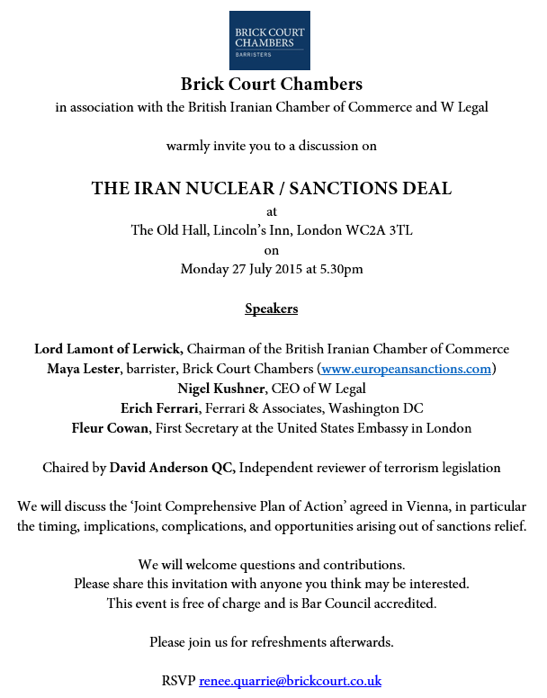Update on Timeline for Implementation Day
The U.S. Department of the Treasury’s Office of Foreign Assets Control is scheduled to release detailed guidance relating to the lifting of sanctions under the nuclear agreement between the U.S., other major world powers, and Iran (otherwise known as the JCPOA). Such guidance is expected to be issued prior to the actual lifting of sanctions, which is itself scheduled to occur once Iran implements its key nuclear-related commitments pursuant to the JCPOA. As such, a central question for sanctions law practitioners is when Iran will, in fact, complete all of its key nuclear-related steps to win U.S. sanctions relief.
As I have written elsewhere, U.S. authorities originally expected Iran to take between 6-9 months before it completed its key nuclear-related commitments and received U.S. sanctions relief. Under this timeline, sanctions relief for Iran would not be expected to take place until mid-March to June 2016. On the other hand, Iran predicted that it would complete its key nuclear-related steps and win sanctions relief by the end of December 2015 – a much faster-paced timeline for Iran’s implementation of the nuclear agreement.
Two months into implementation, what’s the more realistic timeline? If recent reports are an indication, as well as what I am hearing from members of the Obama administration, then it is Iran’s.
Yesterday, the JCPOA parties held a meeting in Vienna to discuss a draft resolution for the IAEA’s Board of Governors, which would resolve Iran’s ‘PMD file’. While there, the Russian ambassador to the IAEA predicted that Implementation Day would likely take place by mid-January. (Russia is well-positioned to understand the pace at which Iran seeks sanctions relief as it will be receiving Iran’s extra stock of enriched uranium, which is required to be shipped out of Iran as part of the nuclear agreement.)
Moreover, in conversations I have had with U.S. officials, the Obama administration has become aware of the “breakneck” speed at which Iran is dismantling its inactive centrifuges and otherwise taking steps to come into compliance with the nuclear agreement. Moreover, insofar as Iran could be expected to take its time dismantling active centrifuges, as these are much more susceptible to “breakage” upon de-installation, evidence suggests that this is not the case. In fact, Iran’s own political leadership has prepared the country for up to a 30% “breakage” rate in active centrifuges – meaning, that Iran is more interested in winning sanctions relief than ensuring that its stock of active centrifuges remain intact. As a result, some in the Obama administration are more credibly suggesting that Implementation Day could be reached by Iran at some point early next year (late January-to-mid-February).
What does this mean for OFAC’s expected guidance on sanctions relief? Well, as I predicted, it will come sooner than later. Under these accelerated timelines for Iran to implement its nuclear-related obligations, OFAC is likely to issue detailed guidance on sanctions relief at some point next month. As I have heard it explained to me, U.S. officials hope for such guidance to be revealed at least a week or two in advance of the actual lifting of sanctions. Considering’s Iran pace in implementing the JCPOA, then, I expect OFAC to release detailed guidance, including a plethora of FAQs, by at least mid-January.


